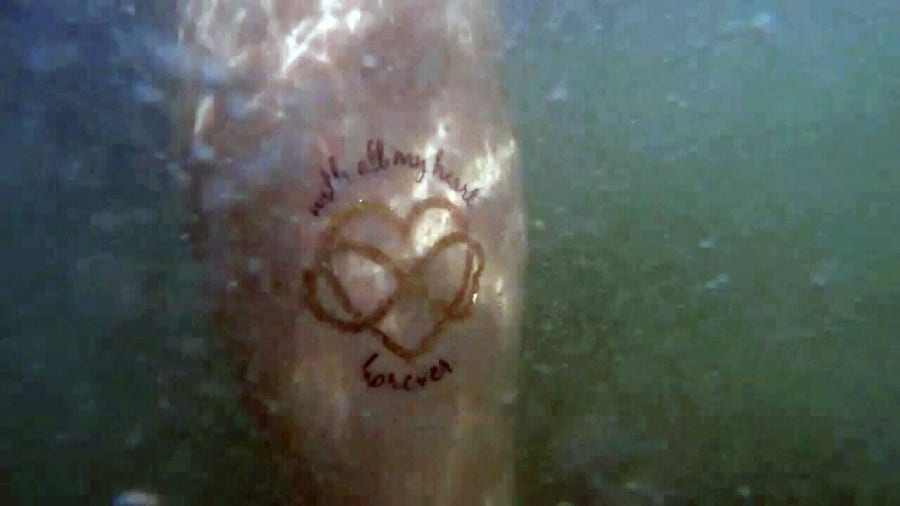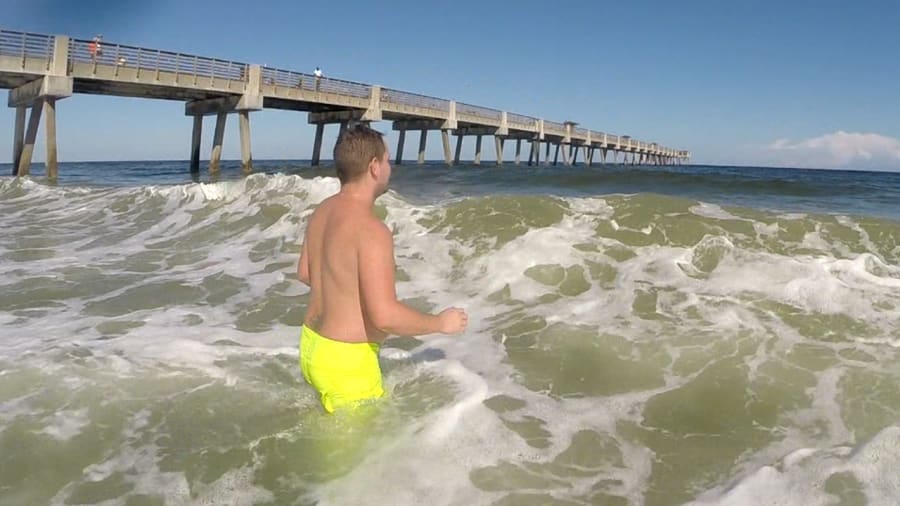JACKSONVILLE, Fla. – Tattoos and bright colored nail polish have been linked to shark attacks, according to George Burgess, director of the International Shark Attack File for the Florida Museum of Natural History at the University of Florida.
Burgess is considered one of the leading shark researchers in the world. He says he's interviewed nearly every shark attack victim.
News4Jax called him after four swimmers were attacked within four days in Northeast Florida.

The first was Sept. 17, when a surfer in Jacksonville Beach was bitten on the foot. He needed 18 stitches to close two wounds. [Full report]
The next day, a man swimming off Big Talbot Island was also attacked in his leg.

Then two days later, on Sept. 20, 12-year-old Josh Bitner was bitten on the ankle as he played in waist deep water off Fernandina Beach. [Full report]

That same day, a 16-year-old had a shark chomp down on his right arm. All of them survived, with quite a story to tell about their encounters and dozens of stitches to mend their wounds. [Full report]
"It's like Christmas in September for sharks," explained Professor Burgess about why there were so many shark attacks in such a short amount of time in Northeast Florida. It turns out there was something going on in the water that week. Mullet were spewing out of the mouth of the St. Johns River, into the ocean, to spawn.

"They (sharks) aren't at the right place at the right time by coincidence, they've had millions of years of practice. So when the mullet leave the inlet, sharks have an excellent sense of timing and seasonality," explained Burgess.
Black tip, spinner sharks, and bull sharks are among the types of sharks who know the mullet are spawning, drawing them closer to our coast.
The mullet, trying to get away from them, swim to shallow water. This is where swimmers are playing in the surf. "It's absolutely predictable in the fall that we'll have a mullet run, there's going to be a feeding frenzy of lots of animals," explained Burgess.
Burgess said sharks mistakenly bite humans, thinking they are a fish.

Tattoos attract sharks?
"Unfortunately, we've seen on more than one occasion, sharks biting a tattoo area where the tattoo is strikingly different from unusually pale skin," said Burgess.
He said sharks cannot see color, but they can see contrast very well, lighter skin with darker coloring on it, like a tattoo. This looks just like a fish to a shark.

Burgess said he thinks Lacy Martin, a Texas woman who was attacked by a Bull shark as she snorkeled off Tahiti Beach in the Bahamas last January, was targeted because of a tattoo on her back.
Amazingly, she survived, but her husband said when he pulled her onto the boat, she was missing all the skin from under her arm down her back. She spent three weeks in the hospital. Ironically, the tattoo was of a fish.
Toe nail polish attracts sharks?
Last June, a Jacksonville Beach mother was swimming in the ocean around 7 p.m., when she was attacked by a bull shark. It bit her twice in the leg. She required months of therapy to get back on her feet. Burgess said she's luck to be alive.
"Bull sharks are the wild card of sharks," he explained. "It normally goes after large prey items, it has teeth that are designed to sheer, for taking chunks out of things and a human being is often times the right size to give a shot at," said Burgess.
He said he believes the bu

ll shark that attacked the Jacksonville Beach mother confused her toes for a school of fish.
"She had bright colored, bluish purple, toe nail polish on that looked like a school of fish swimming in sync."
'We've seen other bites involving feet with toe nail polish that contrasts with the skin color of people," said Burgess.

Sharks are attracted to hands, feet in water?
Burgess says it's the contrast in color, combined with murky water off our coast, that confuses sharks. "If we look at our hands, the palms are always lighter than the tops of our hands, same thing with soles of our feet, regardless of race, our palms or soles are always lighter so where are those hands and feet? They're in the surf splashing. Those are attractive to sharks."
Sharks attracted to yellow and white bathing suits?

Shark expert, George Burgess, refers to bright colored yellow as "yum, yum yellow," to a shark. Since sharks see contrast colors, anything that is very bright against lighter or darker skin can look like a bait fish to a shark.
For this reason, he suggests swimmers avoid wearing yellow, white, or even bathing suits with contrasting colors, like black and white. Burgess suggested divers who wear wet suits with bright colors, switch to all black. "When I go diving, I wear black gloves with my black wet suit," explained Burgess.
How to avoid a shark encounter
Burgess said anyone going into to the ocean should remember the following:
- Never swim in the ocean between dusk and dawn, this is when sharks are more likely to be swimming close to our beaches for fish.
- Avoid swimming near any fishing pier or any fisherman who is casting a line in the ocean near where you are in the water. Sharks are drawn to any fish on a hook and can sense the fish in distress from at least a mile away.
- Get out of the water if you ever see sea gulls diving for fish, or see a school of fish swimming nearby. Chances are something bigger is chasing it.
- Avoid wearing any jewelry. It shines like the scales of a fish.


